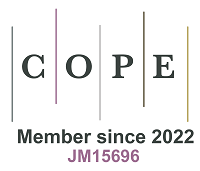REFERENCES
1. Ackerman D. Anthropogenic impacts on high-latitude ecosystems: Shrubs will grow. Will nitrogen flow? Retrieved from the University of Minnesota Digital Conservancy, https://hdl.handle.net/11299/206349 [Last accessed on 14 Dec 2020].
2. Conti J, Holtberg P, Diefenderfer J, LaRose A, Turnure JT, Westfall L. International energy outlook 2016 with projections to 2040. United States. Available from: https://doi.org/10.2172/1296780 [Last accessed on 14 Dec 2020].
3. Manu S, Shukla Y, Rawal R, Thomas LE, de Dear R. Field studies of thermal comfort across multiple climate zones for the subcontinent: India Model for Adaptive Comfort (IMAC). Building and Environment 2016;98:55-70.
4. Paone A, Bacher J. The Impact of Building Occupant Behavior on Energy Efficiency and Methods to Influence It: A Review of the State of the Art. Energies 2018;11:953.
5. Du J, Yu C, Pan W. Multiple influencing factors analysis of household energy consumption in high-rise residential buildings: Evidence from Hong Kong. Build Simul 2020;13:753-69.
6. Hu S, Yan D, Guo S, Cui Y, Dong B. A survey on energy consumption and energy usage behavior of households and residential building in urban China. Energy and Buildings 2017;148:366-78.
7. Bagchi A. Global construction output to grow 3.6% per year until 2022 - report 2018. Available from: https://meconstructionnews.com/31872/global-construction-output-to-grow-3-6-per-year-until-2022-report.[Last accessed on 14 Dec 2020].
8. Marcel Moshi A, Guruvasanth S, Samuel PM, Billigraham SS. Effective techniques for energy conservation in buildings - A comprehensive review. Materials Today: Proceedings 2020; doi: 10.1016/j.matpr.2020.02.172.
9. Chwieduk DA. Towards modern options of energy conservation in buildings. Renewable Energy 2017;101:1194-202.
10. Lehner M, Mont O, Heiskanen E. Nudging - A promising tool for sustainable consumption behaviour? Journal of Cleaner Production 2016;134:166-77.
11. Mont O, Lehner M, Heiskanen E. Nudging a tool for sustainable behaviour? The Swedish Environmental Protection Agency; 2017. Available from: https://www.researchgate.net/publication/271211332_Nudging_A_tool_for_sustainable_behaviour [Last accessed on 14 Dec 2020].
12. Laaroussi Y, Bahrar M, Elmankibi M, Draoui A, Si-larbi A. Occupant behaviour: a major issue for building energy performance. IOP Conf Ser:Mater Sci Eng 2019;609:072050.
13. Serale G, Fiorentini M, Capozzoli A, Bernardini D, Bemporad A. Model Predictive Control (MPC) for Enhancing Building and HVAC System Energy Efficiency: Problem Formulation, Applications and Opportunities. Energies 2018;11:631.
14. Shareef H, Ahmed MS, Mohamed A, Al Hassan E. Review on Home Energy Management System Considering Demand Responses, Smart Technologies, and Intelligent Controllers. IEEE Access 2018;6:24498-509.
15. Hannan MA, Faisal M, Ker PJ, et al. A Review of Internet of Energy Based Building Energy Management Systems: Issues and Recommendations. IEEE Access 2018;6:38997-9014.
16. Smarra F, Jain A, de Rubeis T, Ambrosini D, D’Innocenzo A, Mangharam R. Data-driven model predictive control using random forests for building energy optimization and climate control. Applied energy 2018;226:1252-72.
17. Yang S, Wan MP, Ng BF, et al. A state-space thermal model incorporating humidity and thermal comfort for model predictive control in buildings. Energy and Buildings 2018;170:25-39.
18. Godina R, Rodrigues EM, Pouresmaeil E, Catalão JP. Optimal residential model predictive control energy management performance with PV microgeneration. Computers & Operations Research 2018;96:143-56.
19. Martinaitis V, Zavadskas EK, Motuzienė V, Vilutienė T. Importance of occupancy information when simulating energy demand of energy efficient house: A case study. Energy and Buildings 2015;101:64-75.
20. Delzendeh E, Wu S, Lee A, Zhou Y. The impact of occupants’ behaviours on building energy analysis: A research review. Renewable and Sustainable Energy Reviews 2017;80:1061-71.
21. Rafsanjani HN, Ahn C. Linking Building Energy-Load Variations with Occupants’ Energy-Use Behaviors in Commercial Buildings: Non-Intrusive Occupant Load Monitoring (NIOLM). Procedia Engineering 2016;145:532-9.
22. Niamir L, Filatova T, Voinov A, Bressers H. Transition to low-carbon economy: Assessing cumulative impacts of individual behavioral changes. Energy Policy 2018;118:325-45.
23. Koop SHA, Van Dorssen AJ, Brouwer S. Enhancing domestic water conservation behaviour: A review of empirical studies on influencing tactics. J Environ Manage 2019;247:867-76.
25. Hu H, Fang W, Yu X. Enhancing individual commitment to energy conservation in organizational settings: Identity manipulation for behavioral changes. Resources, Conservation and Recycling 2020;156:104720.
26. Obaidellah UH, Danaee M, Mamun MAA, Hasanuzzaman M, Rahim NA. An application of TPB constructs on energy-saving behavioural intention among university office building occupants: a pilot study in Malaysian tropical climate. J Hous and the Built Environ 2019;34:533-69.
27. Tetlow RM, van Dronkelaar C, Beaman CP, Elmualim AA, Couling K. Identifying behavioural predictors of small power electricity consumption in office buildings. Building and Environment 2015;92:75-85.
28. Allen S, Marquart-pyatt ST. Workplace energy conservation at Michigan State University. IJSHE 2018;19:114-29.
29. Blanke J, Beder C, Klepal M. An Integrated Behavioural Model towards Evaluating and Influencing Energy Behaviour-The Role of Motivation in Behaviour Demand Response. Buildings 2017;7:119.
30. Stern PC, Kalof L, Dietz T, Guagnano GA. Values, Beliefs, and Proenvironmental Action: Attitude Formation Toward Emergent Attitude Objects1. J Appl Social Pyschol 1995;25:1611-36.
31. Sarkis AM. A comparative study of theoretical behaviour change models predicting empirical evidence for residential energy conservation behaviours. Journal of Cleaner Production 2017;141:526-37.
32. Schwartz SH. Are There Universal Aspects in the Structure and Contents of Human Values? Journal of Social Issues 1994;50:19-45.
33. Dunlap RE, Van Liere KD. The “New Environmental Paradigm”. The Journal of Environmental Education 2014;9:10-9.
34. Schwartz SH. . Normative Influences on Altruism. Advances in Experimental Social Psychology Volume 10. Elsevier; 1977. pp. 221-79.
35. Guagnano GA, Stern PC, Dietz T. Influences on Attitude-Behavior Relationships: A Natural Experiment with Curbside Recycling. J Environ Educ 1995;27:699-718.
36. Prochaska JO, Johnson S, Lee P. . The transtheoretical model of behavior change. In S. A. Shumaker, J. K. Ockene, & K. A. Riekert (Eds.), The handbook of health behavior change. Springer Publishing Company; 2009. p. 59-83.
37. Ernecoff NC, Keane CR, Albert SM. Health behavior change in advance care planning: an agent-based model. BMC Public Health 2016;16:193.
38. Michie S, van Stralen MM, West R. The behaviour change wheel: a new method for characterising and designing behaviour change interventions. Implement Sci 2011;6:42.
40. Kahneman D. Maps of Bounded Rationality: Psychology for Behavioral Economics. American Economic Review 2003;93:1449-75.
41. Kahneman D. Thinking, fast and slow: Macmillan; 2011. Available from: https://us.macmillan.com/books/9780374533557 [Last accessed on 14 Dec 2020].
42. Wong-parodi G, Krishnamurti T, Gluck J, Agarwal Y. Encouraging energy conservation at work: A field study testing social norm feedback and awareness of monitoring. Energy Policy 2019;130:197-205.
43. Ornaghi C, Costanza E, Kittley-davies J, Bourikas L, Aragon V, James PA. The effect of behavioural interventions on energy conservation in naturally ventilated offices. Energy Economics 2018;74:582-91.
44. Carrico AR, Riemer M. Motivating energy conservation in the workplace: An evaluation of the use of group-level feedback and peer education. Journal of Environmental Psychology 2011;31:1-13.
45. Reddy V, Bushree B, Chong M, et al. . Influencing Participant Behavior Through a Notification-Based Recommendation System. In: Ham J, Karapanos E, Morita PP, Burns CM, editors. Persuasive Technology. Cham: Springer International Publishing; 2018. pp. 113-9.
46. Curry E, Hasan S, Kouroupetroglou C, Fabritius W, ul Hassan U, Derguech W. Internet of Things Enhanced User Experience for Smart Water and Energy Management. IEEE Internet Comput 2018;22:18-28.
47. Konis K, Blessenohl S, Kedia N, Rahane V. TrojanSense, a participatory sensing framework for occupant-aware management of thermal comfort in campus buildings. Building and Environment 2020;169:106588.
48. Ma G, Lin J, Li N. Longitudinal assessment of the behavior-changing effect of app-based eco-feedback in residential buildings. Energy and Buildings 2018;159:486-94.
49. Francisco A, Truong H, Khosrowpour A, Taylor JE, Mohammadi N. Occupant perceptions of building information model-based energy visualizations in eco-feedback systems. Applied Energy 2018;221:220-8.
50. Cooper EJ. To nudge or not to nudge: promoting environmentally beneficial behaviors. (2017). Bard Center for Environmental Policy. 10. Available from: http://digitalcommons.bard.edu/bcep/10 [Last accessed on 14 Dec 2020].
51. Charlier C, Guerassimoff G, Kirakozian A, Selosse S. . Nudging electricity consumption within firms. Feedbacks from a field experiment. 2019.
52. Weghorst M. Exploring the possibility of pro-environmental nudging by fine-tuning the stairs versus elevator nudge 2016. Available from: https://dspace.library.uu.nl/handle/1874/341690 [Last accessed on 14 Dec 2020].
53. Lassen N, Goia F, Schiavon S, Pantelic J. Field investigations of a smiley-face polling station for recording occupant satisfaction with indoor climate. Building and Environment 2020;185:107266.
54. Gulbinas R, Taylor JE. Effects of real-time eco-feedback and organizational network dynamics on energy efficient behavior in commercial buildings. Energy and Buildings 2014;84:493-500.
55. West SR, Ward JK, Wall J. Trial results from a model predictive control and optimisation system for commercial building HVAC. Energy and Buildings 2014;72:271-9.
56. Khashe S, Lucas G, Becerik-gerber B, Gratch J. Buildings with persona: Towards effective building-occupant communication. Computers in Human Behavior 2017;75:607-18.
57. Kar P, Shareef A, Kumar A, Harn KT, Kalluri B, Panda SK. ReViCEE: A recommendation based approach for personalized control, visual comfort & energy efficiency in buildings. Building and Environment 2019;152:135-44.
58. Heydarian A, Pantazis E, Carneiro JP, Gerber D, Becerik-gerber B. Lights, building, action: Impact of default lighting settings on occupant behaviour. Journal of Environmental Psychology 2016;48:212-23.
59. Miller DJ. . Behavioral opportunities for energy savings in office buildings: a London field experiment: Centre for Environmental Policy, Faculty of Natural Science, Imperial; 2013.
60. Rafsanjani HN, Ghahramani A, Nabizadeh AH. iSEA: IoT-based smartphone energy assistant for prompting energy-aware behaviors in commercial buildings. Applied Energy 2020;266:114892.
61. Iria J, Fonseca N, Cassola F, et al. A gamification platform to foster energy efficiency in office buildings. Energy and Buildings 2020;222:110101.
62. Heydarian A, Mcilvennie C, Arpan L, et al. What drives our behaviors in buildings? Building and Environment 2020;179:106928.
63. Lopes JRN, Kalid RDA, Rodríguez JLM, Ávila Filho S. A new model for assessing industrial worker behavior regarding energy saving considering the theory of planned behavior, norm activation model and human reliability. Resources, Conservation and Recycling 2019;145:268-78.
64. Reeves B, Cummings JJ, Scarborough JK, Yeykelis L. Increasing Energy Efficiency With Entertainment Media: An Experimental and Field Test of the Influence of a Social Game on Performance of Energy Behaviors. Environment and Behavior 2013;47:102-15.
65. Schakib-ekbatan K, Çakıcı FZ, Schweiker M, Wagner A. Does the occupant behavior match the energy concept of the building? Building and Environment 2015;84:142-50.
66. Sunstein CR, Reisch LA. Automatically green: Behavioral economics and environmental protection. Harv Envtl L Rev 2014;38:127.
67. Costa DL, Kahn ME. ENERGY CONSERVATION “NUDGES” AND ENVIRONMENTALIST IDEOLOGY: EVIDENCE FROM A RANDOMIZED RESIDENTIAL ELECTRICITY FIELD EXPERIMENT: Energy Conservation “Nudges” and Environmentalist Ideology. Journal of the European Economic Association 2013;11:680-702.
68. Kasperbauer T. The permissibility of nudging for sustainable energy consumption. Energy Policy 2017;111:52-7.
69. Byerly H, Balmford A, Ferraro PJ, et al. Nudging pro-environmental behavior: evidence and opportunities. Front Ecol Environ 2018;16:159-68.
70. Hilton D, Treich N, Lazzara G, Tendil P. Designing effective nudges that satisfy ethical constraints: the case of environmentally responsible behaviour. Mind Soc 2018;17:27-38.
71. Croson R, Treich N. Behavioral Environmental Economics: Promises and Challenges. Environ Resource Econ 2014;58:335-51.
72. Frederiks ER, Stenner K, Hobman EV. Household energy use: Applying behavioural economics to understand consumer decision-making and behaviour. Renewable and Sustainable Energy Reviews 2015;41:1385-94.
73. Liu Y, Veríssimo D, Farhidi F. Using social norm to promote energy conservation in a public building. Energy and Buildings 2016;133:32-6.
74. Sunstein CR. . Behavioural economics, consumption and environmental protection. Handbook of Research on Sustainable Consumption. Edward Elgar Publishing; 2015. pp. 313-27.
75. Higham J, Cohen SA, Cavaliere CT, Reis A, Finkler W. Climate change, tourist air travel and radical emissions reduction. Journal of Cleaner Production 2016;111:336-47.
76. Goldstein NJ, Cialdini RB, Griskevicius V. A Room with a Viewpoint: Using Social Norms to Motivate Environmental Conservation in Hotels. J Consum Res 2008;35:472-82.
77. Thaler R, Benartzi S. Save More Tomorrow™: Using Behavioral Economics to Increase Employee Saving. Journal of Political Economy 2004;112:S164-87.
78. Bazerman MH, Moore DA. Judgment in managerial decision making: John Wiley & Sons; 2012. Available from: https://www.wiley.com/en-au/Judgment+in+Managerial+Decision+Making%2C+8th+Edition-p-9781118065709[Last accessed on 14 Dec 2020].
80. Cropanzano R. Predictably irrational: The hidden forces that shape our decisions. By Dan Ariely, HarperCollins: New York, 2008. ISBN 978-0-06-135323-9. J Behav Decis Making 2010;23:330-1.
81. Burger JM. Increasing compliance by improving the deal: The that's-not-all technique. Journal of Personality and Social Psychology 1986;51:277-83.
82. Nolan JM, Schultz PW, Cialdini RB, Goldstein NJ, Griskevicius V. Normative social influence is underdetected. Pers Soc Psychol Bull 2008;34:913-23.
83. Science, Committee T. House of Lords-Science and Technology Select Committee 2nd Report of Session 2010-12-Behaviour Change. House of Lords Paper 2011;179. Available from: https://publications.parliament.uk/pa/ld201012/ldselect/ldsctech/179/179.pdf.
84. Stroebe W, Strack F. The Alleged Crisis and the Illusion of Exact Replication. Perspect Psychol Sci 2014;9:59-71.
85. Agha-hossein M, Tetlow R, Hadi M, et al. Providing persuasive feedback through interactive posters to motivate energy-saving behaviours. Intelligent Buildings International 2014;7:16-35.
86. Klege R, Visser M, Datta S, Darling M. The Power of Nudging: Using Feedback, Competition and Responsibility Assignment to Save Electricity in a Non-Residential Setting. URL: https://econrsa org/system/files/publications/working_papers/working_paper_763 pdf working paper. 2018. Available from: https://www.ideas42.org/wp-content/uploads/2019/10/working_paper_763.pdf[Last accessed on 14 Dec 2020].
87. Yogi S. Use of BIM-based energy simulations to analyze the impact of occupant behavior on energy performance of commercial buildings: Colorado State University; 2018. Available from: https://hdl.handle.net/10217/185735[Last accessed on 14 Dec 2020].
88. Ashouri M, Fung BC, Haghighat F, Yoshino H. Systematic approach to provide building occupants with feedback to reduce energy consumption. Energy 2020;194:116813.
89. Khosrowpour A, Jain RK, Taylor JE, Peschiera G, Chen J, Gulbinas R. A review of occupant energy feedback research: Opportunities for methodological fusion at the intersection of experimentation, analytics, surveys and simulation. Applied Energy 2018;218:304-16.
90. Pritoni M, Salmon K, Sanguinetti A, Morejohn J, Modera M. Occupant thermal feedback for improved efficiency in university buildings. Energy and Buildings 2017;144:241-50.
91. Alskaif T, Lampropoulos I, van den Broek M, van Sark W. Gamification-based framework for engagement of residential customers in energy applications. Energy Research & Social Science 2018;44:187-95.
92. Bisadi M, Akrami A, Teimourzadeh S, Aminifar F, Kargahi M, Shahidehpour M. IoT-Enabled Humans in the Loop for Energy Management Systems: Promoting Building Occupants' Participation in Optimizing Energy Consumption. IEEE Electrific Mag 2018;6:64-72.
93. Manic M, Amarasinghe K, Rodriguez-andina JJ, Rieger C. Intelligent Buildings of the Future: Cyberaware, Deep Learning Powered, and Human Interacting. EEE Ind Electron Mag 2016;10:32-49.






